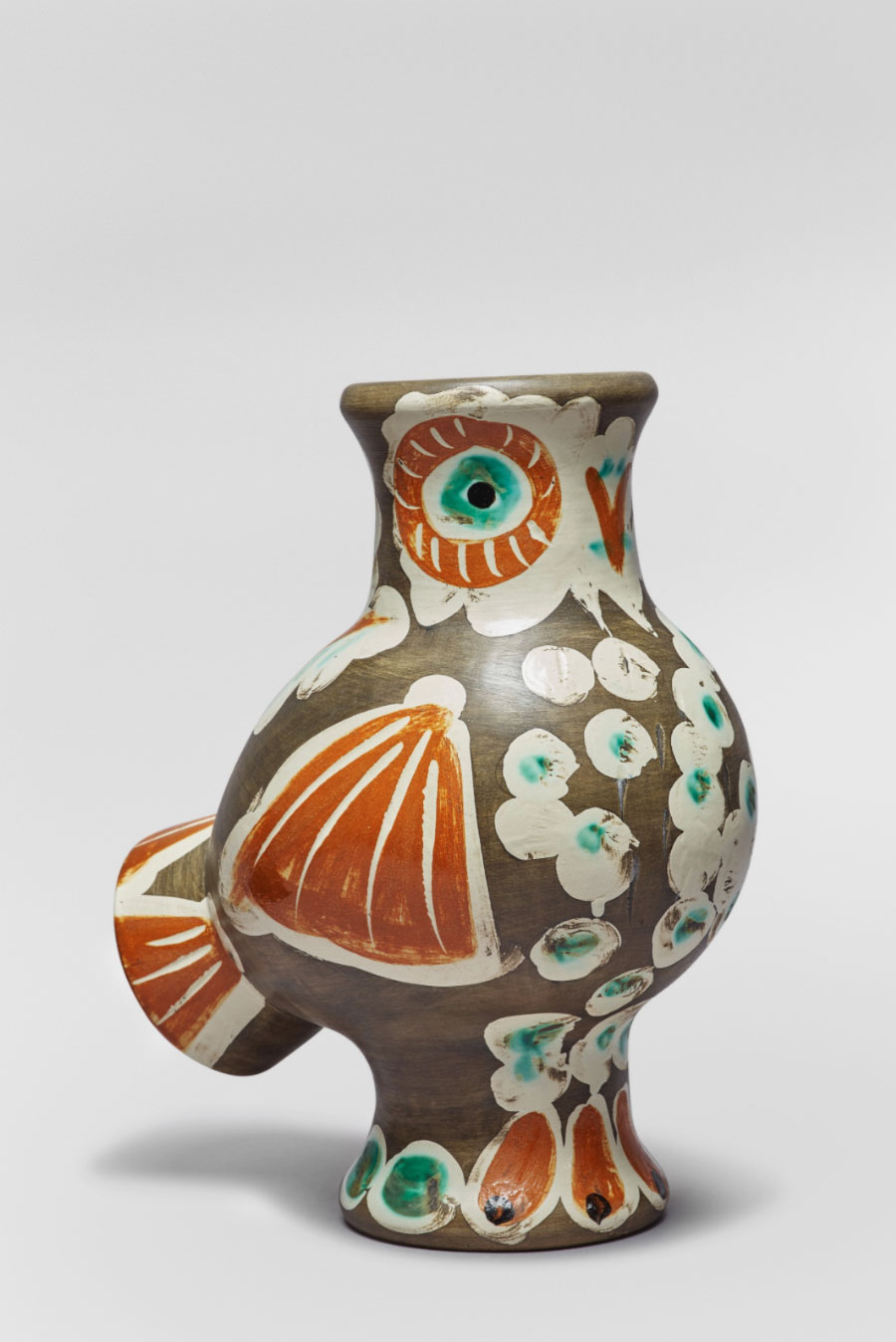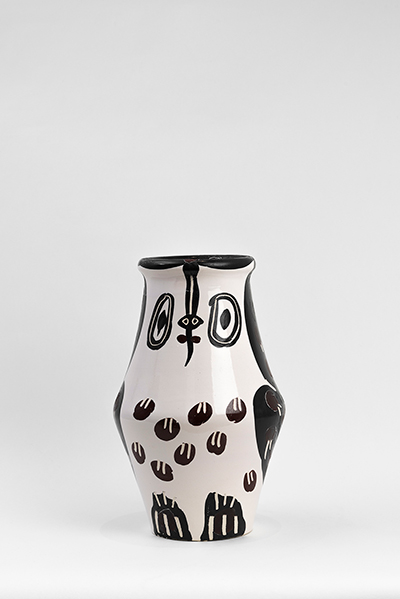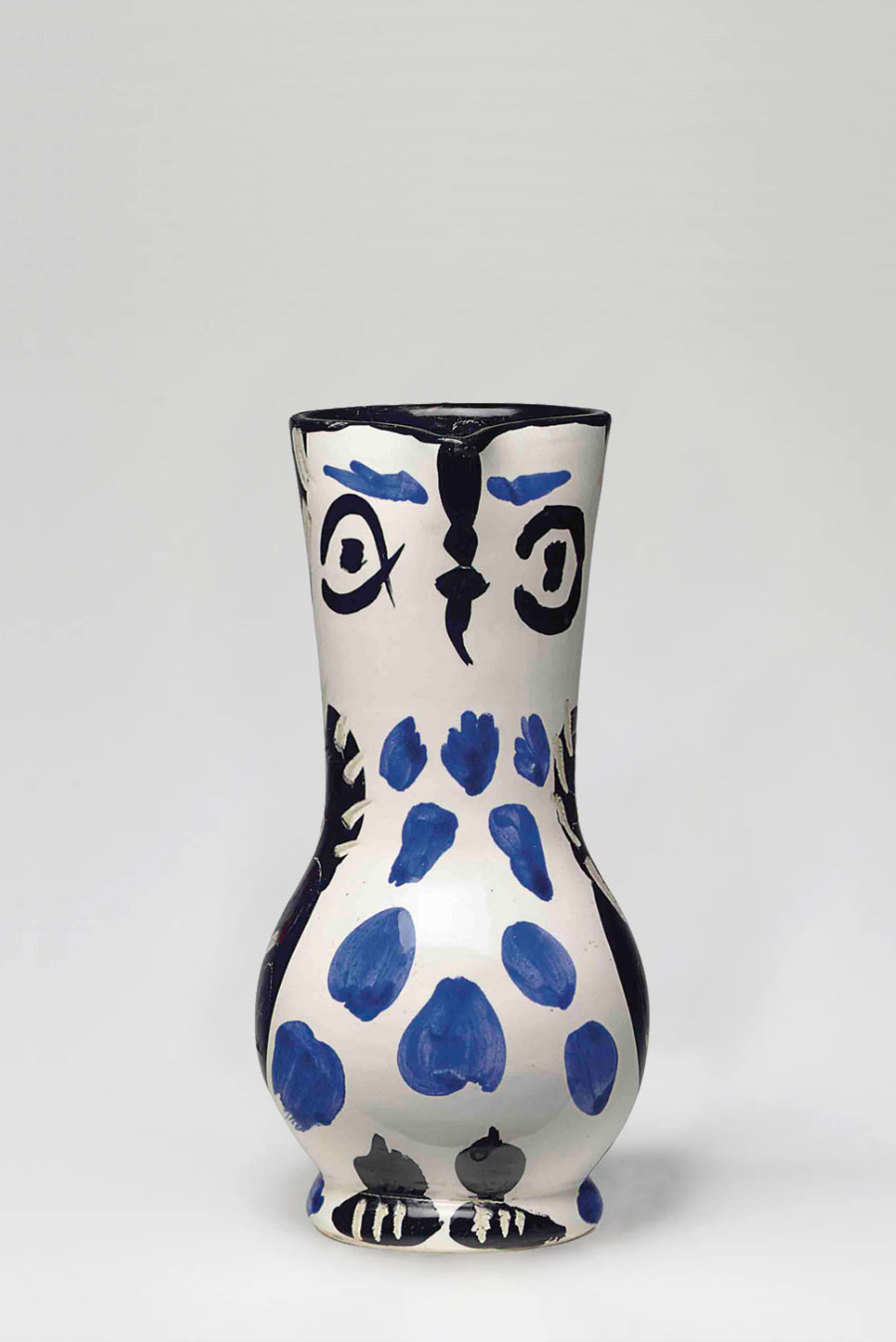Pablo Picasso was undoubtedly a prolific 20th century painter, however his work in ceramics is also one of impressive magnitude. Picasso’s works in clay were produced at the Madoura pottery, run by the Ramie family, in Vallauris in the south of France. Over the course of 20 years, he created over 3,500 unique and editioned ceramic pieces that explored anthropomorphic designs, animal forms, mythological and classical imagery.
With his playful approach to the medium, Picasso embraced the motif of the owl, its presence recurring prominently through many of his ceramic works. The allure of the subject was stimulated in Vallauris, alongside his growing appreciation of ceramics, as the owl is an ancient symbol of the neighbouring town, Antibes. The connection with the figure of the owl was deepened when the artist discovered an owl with an injured claw during his time in Antibes. Picasso’s partner Françoise Gilot documented this experience in her autobiography, Life With Picasso, stating ‘one of his claws had been injured. We bandaged it and it gradually healed. We bought a cage for him and when we returned to Paris, we brought him back with us and put him in the kitchen with the canaries, the pigeons and the turtledoves.’ A great lover of animals, Picasso gained a great affection for the bird, incorporating the muse into the many whimsical ceramics he went on to create.
Decorative yet expressive, Picasso transformed the basic forms offered by vases, plates or bowls to reference the owl. The artist built the motif into his practice, utilising the bird’s historic associations with wisdom, imagination and mortality. Exploring this motif in multiple variations, he often repeated forms and played with different decorative effects to achieve a modern representation of this timeless symbol. The artist began with simpler objects such as plates and bowls, but as his inspiration grew so did his ambitions. This led him to experiment with items such as pitchers and jugs, where he could manipulate the basic aspects of the shape to become anatomical additions to his owls. Small Owl Jug (Petit Pichet de Hibou) (1955) is a turned jug that displays this manipulation. Here, he expertly uses glaze to give the allusion of depth and texture, juxtaposing the bird’s chest in white from the black feathers that cascade behind. The blue spots are balanced to lead our eye to the large, stylised eyes of the owl, their invention adding the final touch of character and soul to the work.

Wood-Owl (Chouette), 1968

Black and Brown Owl (Hibou Marron Noir), 1951
In particular, Picasso utilised the vase design to embody his owl motif, becoming one of his most iconic shapes. Black and Brown Owl (Hibou Marron Noir) (1951), exemplifies this vase shape. Despite its minimal shape, the owl is ornamented with gestural and precise details that animate the work with remarkable personality. The painterly brushstrokes follow the shape of the vase, the strokes natural end giving the owls feathers a fluffy effect and a sense of dynamism. Picasso slightly deters from the traditional vase shape, tapering the clay in at the top and the base to create an appearance of a charming, bulging bellied owl. His reaction away from conventional shapes is further evident in his piece, Wood-Owl (Chouette) (1968), where we see how Picasso inventively morphs the vase into a more animalistic shape of an owl, as the clay is manipulated to create a tail, and the base transforming into feet. The colour palette in this work also adds a more organic take to the subject, connecting the practicality and aesthetic aspects in sculptural harmony
